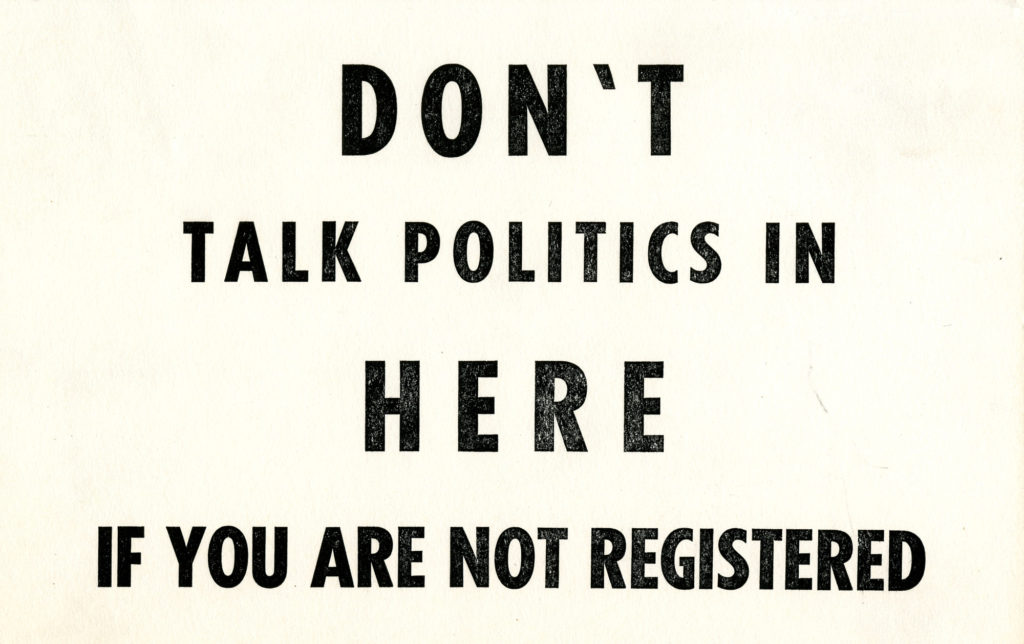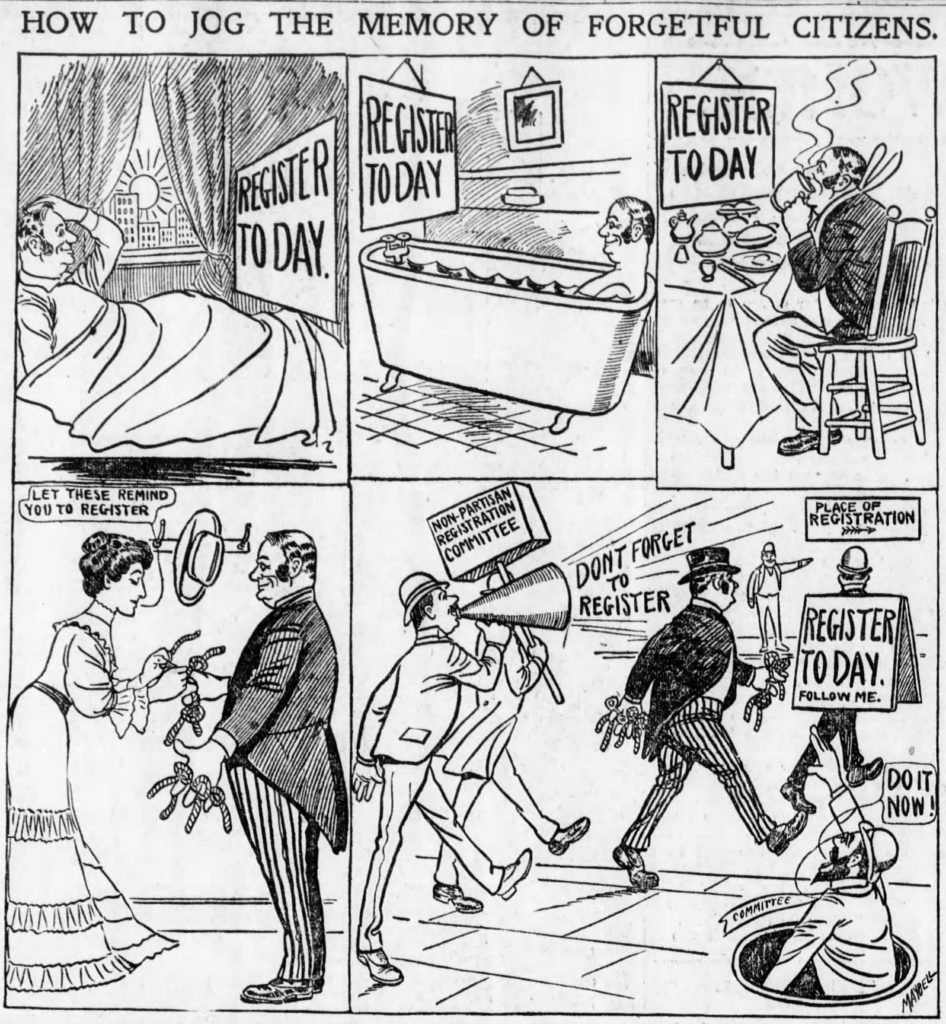Have a drink with: The American Voter
A high and important duty to perform.
Ask: what’s your plan for voting?

We’re not alone among the world’s democracies in this fact, but Americans don’t have a great record on voter turnout, particularly when midterm elections are involved. This is not unique to the modern era, either: back in 1803, when Connecticut was considering the sort of structural political change that would lead to the passage of our 1818 Constitution, fusty Federalist judge David Daggett, writing under a pseudonym in a political pamphlet called “Facts Are Stubborn Things,” (no kidding, dude) encouraged his readers to avoid Election Day laziness:
“[G]ive your suffrages for those whom your consciences approve. Let no federalist say my town will do right without me, or my vote will not oppose the triumph of democracy. Each freeman should feel that he has a high and important duty to perform, and that in neglecting it, he is inexcusable.”
But more to the point: a reminder from the past, courtesy the Brooklyn Daily Eagle of October 10, 1905, that there are lots of ways to remind yourself to go vote tomorrow:
Fun Facts:
American political polling is often suggested to have begun with the presidential election in 1824 (you’ll recall this is the election commonly known for the “Corrupt Bargain,” in which suspected influence dealing resulted in the contingent-election victory of John Quincy Adams over Andrew Jackson, even though Jackson had won a plurality of votes). Straw polls conducted at events like public rallies and military musters were for the first time conducted to take the public’s temperature on the upcoming election.*
Connecticut’s 1818 Constitution (happy birthday, by the way!) expanded the right to vote in the state, but regrettably only to white men. The inclusion of women and people of color would not come for decades after, as was true nationwide.
Campaign merchandise goes all the way back to George Washington’s supporters, who eagerly wore supportive buttons. And don’t forget the time-honored tradition of slapping on an “I Voted!” sticker – a little item with a history of its own. For more on how buttons, stickers and signs have attempted to increase voter participation, read on at the National Museum of American History’s site (from which the header image in this post is taken).
Revisit our 2016 roundup of historical Election Day cocktails, straw polls, creative insults and compulsive results-checking.
Additional Reading:
“How to Jog the Memory of Forgetful Citizens,” The Brooklyn Daily Eagle, October 10, 1905
Library of Congress, U.S. Election Statistics: A Resource Guide
* Tom W. Smith, “The First Straw? A Study of the Origins of Election Polls,” The Public Opinion Quarterly, Vol. 54, No. 1 (Spring, 1990)
